Attention, we have them here!
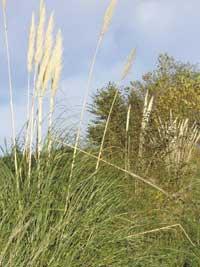
What happens when non-native species are introduced into an ecosystem? Do ecosystems have flexibility to cope with these intrusions or, on the contrary, do newcomers cause great and irreparable damage? Will something special be lost forever? Does it matter?
The possible answers to each question are two extremes (nothing or extreme losses, flexibility yes or no, irreparable damage or yes…). In other words, the ecosystem in which it is integrated must be analyzed in each case. And the examples are two extremes: those that have not happened anything and those that have suffered significant losses or changes in the ecosystem. Therefore, the non-transfer or entry of species without control can be a good policy if we want to conserve ecosystems.
It is possible that the cases of animals are the best known in the introduction of species. Without going further, there are, for example, the damage caused by the red crab and the sign in the autochthonous crab; or the enormous ‘support’ that the American vison has given to the decline of the European vison; or…
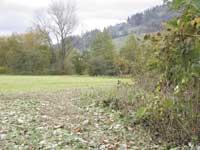
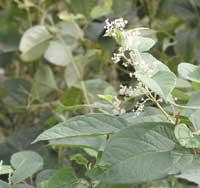
But many plants act as invasive when leaving their environment. The proliferation of travel, international displacement, the increase in gardens and gardening, and the introduction of new crops are the main factors that facilitate the expansion of invasive plants. The transformation of the medium also greatly facilitates the introduction of exotic plants, since in general they are more vulnerable to the invasion of environments with a high degree of disturbance. However, invasions do not have the same effect in all parts of the world: in islands (50% of New Zealand's flora is foreign), in benign climate zones (such as the Cantabrian slope of the ACBC, with mild temperatures and relatively abundant rainfall), in heavily humanized and highly modified areas, usually have a higher incidence.
In Euskal Herria, at least, highlights the importance of transforming the environment to facilitate invasions. There is no more to see where the invasive plants predominantly appear: on the margins of the roads, in the roturos, in the lands moved, in the margins of the rivers and streams, in the coast… In short, the invaders are worth areas where the local vegetable communities have suffered some damage.
Main Features Main Features
The ideal model of invasive plants is one that grows and matures rapidly, produces large seeds and has adequate long-distance dispersion mechanisms. The invaders should be pioneering species, capable of living in a climate similar to that of a territory originally invaded and proliferate strongly without parasites, pests or competences in their places of origin. In theory, because in practice all invaders have almost a similarity: to succeed in territories far from the original. In fact, it is very difficult to establish concrete models to foresee the invasive potential of plants (in the US a special effort is being made in this field).
However, there are some characteristics that facilitate the colonization of the invaders.
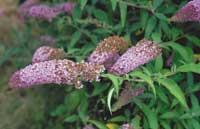
On the one hand, the physiological characteristics, in which the ability to germinate the seeds in poor ecological conditions allows some invaders advantages. It is also able to grow very quickly after the germination of many invaders, occupying in a short time a great space and gaining advantage over other plants. Some have mechanisms that prevent the growth of other plants in their environment (shade, chemical components…). Reynoutria japonica, which has increased so much in the rivers of Gipuzkoa, uses shade to move away its competitors.
On the other hand, there are demographic characteristics. The plants that mature quickly produce seeds before the nearby plants. Among the invaders with this strategy stands out the species Baccharis halimifolia, a shrub that at 2-3 years produces a lot of seeds and is relatively abundant in the humid zones of our coast. In addition, many invaders have the ability to disperse seeds far and survive before their germination.
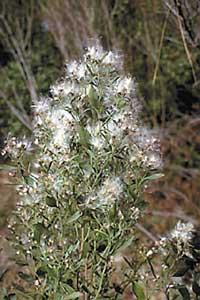
Third, genetic characteristics can be cited, since some invaders are polyploid plant species (that is, with more than two copies of each chromosome, we have two copies). As a result, they present a high diversification potential and a lower risk of endogamy. The plants of some invasive species also have the capacity to self-fertilize.
Despite these three characteristics, most of the strange plant species are annual herbaceous or persistent plants well adapted to modified environments, which do not cause great damage to native flora. Other strangers, however, take advantage of some of the three characteristics and become one of the main dangers for the natural environment. Among them are woody plants (Robinia pseudoacacia, Baccharis halimifolia, Buddleja davidii, etc.) And invasive plant communities of special interest from the point of view of conservation ( Paspalumsp., Stenotaphrum secundatum, C. edulis,… ).
Modes of invasion
In the process of invasion carried out by the strange plants, four steps can be distinguished: the introduction of seeds or viable parts of the plants and the appearance of the first specimens, the fixation in highly transformed lands, the colonization of less altered areas and the invasion of natural plant communities.
Yes, not all invasive species go through these four steps.
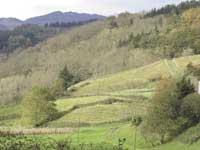
Some plants, for example, remain in very specific areas for years until the population takes a critical measure. Then, the least altered zones suddenly colonize and begin to become a problem, after many years of being considered as little aggressive species. This can be the case of the species C. edulis and Cortaderia selloana present in the Biosphere Reserve of Urdaibai. In fact, in very similar ecosystems and climates, these plants are strongly invasive. In Urdaibai, however, at the moment, there have been no significant impacts.
On the other hand, there are species that from the beginning are strongly settled in ecosystems little or not altered, especially in humid zones, dune ecosystems and island territories. The latter tend to involve sudden changes in the composition of plant communities and, therefore, in the ecosystems in which they are found (for example: communities of invertebrates and vertebrates, levels of production, cycles of nutrients, erosion, sedimentation, etc. ). Although no exhaustive research has been carried out, this may be the one that has been produced after the consolidation of B. halimifolia in Urdaibai carts and grasslands and other coastal areas.
Invaders in Euskal Herria
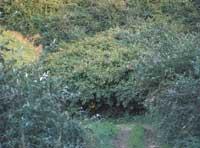
Although the perishable exotic species are dispersed throughout the Basque Country, practically all of the fully naturalized species are found on the Atlantic side and, above all, in the most temperate areas. Why?
The first systematic research on the subject was published in 1997. Of the 236 taxa mentioned there, 67 were settled in natural or semi-natural communities, of which 11 were numerous in natural communities of special interest, the majority in coastal areas. These are data from the Autonomous Community of the Basque Country.
The climatic conditions of some species, especially those that grow in marshes and dunes, as well as the climatic conditions (relatively abundant rainfall and mild temperatures throughout the year) are appropriate for many plants of tropical and subtropical origin, many of them are ornamental and, finally, the human pressure is greater and, therefore, the medium is more modified (roturos, margins of roads, solar, etc. ).
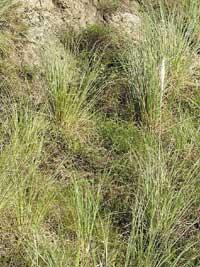
Subsequently, in 2000, 393 species of exotic origin are mentioned for the CAPV. The proliferation of perishable plants has caused the list to grow so much. Of these 15 were considered very dangerous.
Finally, in the 2001 Exotic Flora report of the Urdaibai Biosphere Reserve, 111 exotic plant species are mentioned in the reserve. It has also measured its current impact and the risk of becoming an epidemic in the future.
We are constantly quoting the coastal ecosystems, especially the marshes, in which there has been a more remarkable influence and in which the scant investigations have been carried out so far. But there are also invasive plants in dunes and sandy soils. The species C. edulis, for example, is cultivated in the gardens of sandy soil for its strange flowers, but also extends to the surrounding lands, as has happened in San Antón de Getaria and Algorri de Zumaia.
On the coast, but also on lots, rocks and margins, there are examples. There is, in abundance, the species Buddleja davidii, which in its day was described by the Basque missionary Father David in the original territories of Asia.
The valleys and lands located in the mountainous area, in general, present a greater resistance to exotic naturalized flora, but there are also cases of remarkable invasion. On the margins of rivers and trenches abound B. davidii and R. japonica. The latter's coverage in many rivers of Gipuzkoa is very high. In addition, it is worth mentioning the presence of R. pseudoacacia or false acacia, which grows in scrub, sketches and secondary forests of both mountain and coastal. This is the main forest invader in Europe, and whenever it can form forests. However, it is difficult to introduce oneself to well-developed forest communities. Despite being of North American origin, it has long since reached our art and, therefore, today people do not see it as a strange tree; moreover, when used in the manufacture of stakes, it has a certain ‘fame’.
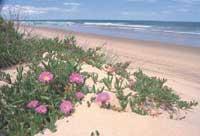
These are just some of the invasive species that we can find in Euskal Herria, since there are more. And they are more abundant than expected. If we look at the shores, they are observed everywhere, some isolated and others with native species totally marginalized forming monospecific communities. When the invasion expands much biodiversity is lost. But it is fair to think that there are also changes in the community of living beings based on original plant species.
But does that matter to you?
History of the floristic invasions in Europe The history of invasive plants in Europe began about 7,000 years ago, in the Neolithic, when agriculture began. Since then, various exotic plants have reached Europe and today, according to some authors, between 10 and 20% of European plants are exotic. Agriculture, crushing and the transport of seeds have turned different plants into “auxiliaries of man”. They are very abundant in villages, communication zones, fields of cultivation… In most regions, about half of the plants of this type are plants coming from another place. From the Neolithic XV. The plants reached until the twentieth century are called archophones and have suffered a significant decline. In the last decades of the twentieth century, being linked to agricultural areas, the herbicides of agricultural use are more and more effective. In addition, the shipments of seeds that are transported in one way or another are increasingly ‘clean’. After the discovery of America by the Europeans came many new plants, neophytes. Since then, and especially since the last century, the trips have also multiplied, both to America and other places in the world, so that the invasive plants are not limited to agricultural areas, but also those used in gardening have increased considerably. |
How to face it? In Europe, unlike the US, there is no specific legislation to regulate the entry of exotic plants (only one kind of canvas has a restricted entry in Europe) and much less for species that have become invasive. However, in some places, due to the severity of the problem, attempts to challenge these plants have already begun. The methods commonly used are:
|
Some Basque invaders
All of them are invasive species, the most problematic for local plant communities and ecosystems, but they are not the only ones. |
Bibliography Bibliography Bibliography
- J. A. A. Campos, M. Herrera. ‘The Flora is integrated in the Basque Country’. 1997.
- J. A. A. Campos, F. Silván Beraza. ‘Exotic Flora of the Biosphere Reserve’. Report of the Board of the Urdaibai Biosphere Reserve. 2001.
- B. van Wilgen, D. Richardson, S. Higgins ‘Integrated Control of Invasive Alien Plants in Terrestrial Ecosystems’. Best management practices for preventing and invasive alien species (Ed. G. G. Preston, G. Brown and E. van Wyk), Working for Water programme, Cape Town. Page. 118-128. 2000.
- S. S. Lowe, M. Browne, S. Boudjelas. 100 of the World´s Worst Invasive Alien Species. A Selection from the Global Invasive Species Database. IUCN/SSC Invasive Species Specialist Group (ISSG), Auckland, New Zealand. 2000.
Buletina
Bidali zure helbide elektronikoa eta jaso asteroko buletina zure sarrera-ontzian











